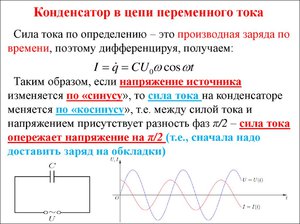
How to replace an AC condenser fan
Content
When the AC system needs a little extra help to cool the condenser, the AC condenser fan turns on. Most modern cars are equipped with dual electric fans. One will be for the radiator, the other for the condenser. The condenser fan is used to blow air around the condenser when the car is stationary or moving at low speed, which allows the air conditioner to maintain the same temperature inside the car.
Without a condenser fan, the AC system may stop working. This is because the pressure gets too high if the refrigerant is not cooled from a hot gas to a liquid. The car's computer determines that the pressure is too high and turns off the air conditioning system. This article will show you how to replace the condenser fan on most car models. The fan should only be replaced if it has been determined that it needs to be replaced.
Part 1 of 3: Determine if the condenser fan is defective
Necessary materials
- Manifold Gauge Kit
- User's Guide
Step 1: Check the operation of the condenser fan.. Start the engine and check under the hood.
Locate the fan trays. One will be on the radiator, the second on the condenser. In some cases, you may need to refer to the user manual to tell them apart.
With the A/C on, the condenser fan should run when the vehicle is idling. If the fan is not working, it may need to be replaced.
Step 2: Check the fan relay.. If the condenser fan relay does not turn on, it may not be receiving power.
It could be related to the fan relay. Check the relay box under the hood. There are two options: test the relay and make sure it works properly, or replace the relay with a known working relay and see if the fan turns on.
If the fan now turns on, the relay must be replaced.
Step 3. Check the pressure in the air conditioning system. The manifold gauge set must be connected to the vehicle.
The blue hose will be installed on the low side hole. The high pressure side will be installed on the high pressure port.
The readings found will be compared with the table for reference. These are the general readings indicated on the graph; refer to the owner's manual for your specific vehicle. If the pressure on the high and low pressure side does not meet the requirements of your vehicle, the air conditioning system may be faulty.
- A warning: The pressure inside the AC system can be extremely high and cause serious injury. If you do not know how to use a set of pressure gauges to check air conditioning pressure, entrust it to professionals.
Part 2 of 3: Removing the Condenser Fan
Necessary materials
- Basic set of sockets
- Eye protection
- Condenser fan
- User's Guide
Step 1: Remove the electrical connection. The first step is to disconnect the electrical connectors on the condenser fan.
On some vehicles, the fan is attached to the radiator fan assembly and must be removed together. In this case, you must also disconnect the radiator fan connector. Disconnect the electrical connector and move to a safe location.
Step 2: Remove mounting bolts. At this stage, everything that prevents you from removing the fan should be the mounting bolts.
If any other parts interfere with the removal of the fan, this must be done before the mounting bolts are removed. How much is removed depends on the make and model; refer to the owner's manual for your specific vehicle.
Remove the mounting bolts at the top and bottom, if installed. Carefully slide the fan assembly up and out of the vehicle.
Step 3: Install the new condenser fan assembly.. With the condenser fan assembly removed, it's time to replace any reusable parts.
After replacing reusable parts, the fan assembly will be installed in reverse order. Carefully slide the assembly down into its mounting location, being careful not to break the fan assembly or damage the heatsink.
When assembly is in place, the mounting bolts can be installed and torqued to specification.
Step 4: Electrical connection. Once the condenser fan is installed and in its final location, the previously removed electrical connector must be installed.
Connect the electrical connections to the removed fans and make sure the connector is installed correctly.
Part 3 of 3: Verify that the condenser fan is working properly
Step 1: Make sure the fan is on. After all repairs are completed and the work is checked, it's time to test the fan again.
Turn on the car and set the air conditioner to the lowest temperature. The condenser fan should now turn on. If the fan assembly does not turn on, check the work done and make sure there are no loose connections.
The fan assembly must turn on with AC when the engine is idling. If it doesn't, additional diagnostics may be required.
Replacing the condenser fan assembly can be a simple task to restore an air conditioning system to its proper working condition. If the condenser fan assembly is left unattended for too long, it may even cause the vehicle to overheat. Taking care of this issue will not only ensure driving comfort, but also keep the vehicle in proper working order. Be sure to inspect if you notice that your car jerks when the A/C is on.
